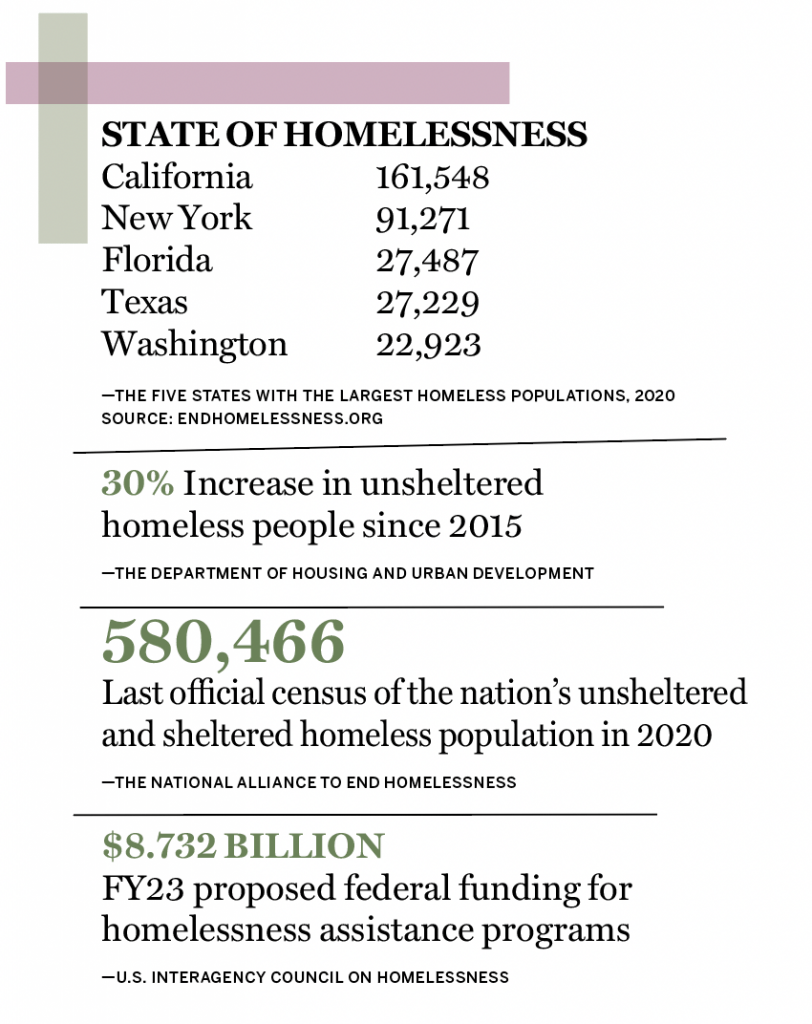Not Outdoors By Choice
The last official census of the nation’s homeless population was conducted just weeks before COVID-19 shut the country down
The numbers are staggering, yet they reflect an undercount. The last official census of the nation’s homeless population set the total at 580,466 in early 2020—right before the onset of the COVID-19 pandemic, according to the National Alliance to End Homelessness.
Homelessness was on the rise for four years prior to 2020, but the statistics on the pandemic’s impact on this vulnerable population have yet to become available. Those numbers won’t arrive until early next year, but many of us witness homelessness daily in cities and towns across the country.
Single adults make up the largest percentage of individuals experiencing homelessness, followed by families with children, veterans and unaccompanied youth, according to the National Alliance to End Homelessness. Victims of domestic violence and individuals suffering from chronic physical and mental health problems are often among the homeless.
Every January, the U.S. Department of Housing and Urban Development, or HUD, asks communities across the country to conduct a “point-in-time” count of the homeless. Volunteers scour the the landscape, documenting those who are living in tent cities, under viaducts, on city streets, along rural roads and elsewhere. They then calculate a count of the unsheltered on the street, and those who stay overnight in shelters. Due to pandemic-related disruptions to counts of unsheltered homeless people in January 2021, a 2021 HUD report only counted people in shelters. On a single night in 2021, HUD found more than 326,000 people were experiencing sheltered homelessness in the United States.
Meanwhile, President Joe Biden’s Fiscal Year 2023 budget proposes $8.732 billion in federal funding for homelessness assistance programs, according to the United States Interagency Council on Homelessness.
Is relief on the way for the nation’s homeless?






















